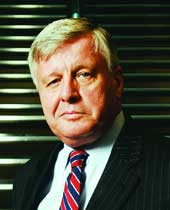A new stage of evolution

As we were preparing this year's Top 100 rankings, we realized that the list had to change because the market and the companies we cover have changed.
As we were preparing this year's Top 100 rankings, we realized that the list had to change because the market and the companies we cover have changed.Successful government contractors no longer simply tout their information technology prowess. They go to market talking about how they solve customers' problems, decrease costs and support critical missions.At the same time, agencies ? swamped by tight budgets, retiring workers and an increasing pace of operations ? are turning to contractors to support a multitude of functions, such as running call centers, providing logistics, conducting research and managing large facilities.IT is certainly at the heart of those operations, but we could not rely strictly on IT and related product service codes to rank the largest government contractors.To provide a more accurate reflection of what is happening in the market and better capture the range of work systems integrators and IT contractors are winning, we worked with market research firm FedSources and increased the product service codes from 117 to more than 600 that we used to analyze the procurement data.On the face of it, that's a huge leap, but the codes we added draw in more professional and engineering services and management support services. We also used codes that would capture more test, analysis and research work in areas such as defense, aerospace and the environment.The most obvious change wrought by the additional codes is the increase in the dollar figures that dictate the rankings. This year, 22 companies have more than $1 billion in fiscal 2006 prime contracting revenue as measured by FedSources. Last year, 13 companies broke the $1 billion threshold.Another readily apparent change is some of the new companies making their debuts on the Top 100. At first blush, it is surprising to see first-time companies such as KBR Inc. (No. 4), Fluor Corp. (No. 8), and United Technologies Corp. (No. 20) so highly ranked. But as you read their profiles and explore their capabilities through the online Top 100 edition, it will become obvious that companies such as these are providing technology-rich products and services to the federal government.We also decided this year to drop the Last Year's Rank column from the Top 100. Because the parameters used to create the rankings have changed so dramatically, we felt it would be unfair and inaccurate to compare last year's list to this year's. To use a cliché, it would be too much of an apples-to-oranges comparison.Unchanged, though, is how the Top 100 acts as a barometer for the government market. Executives interviewed in the profiles and the other stories included in the Top 100 package reveal much about where the market is going and how companies are positioning themselves to succeed.One thing is certain: Change is a constant in the government market.Even for the top company, Lockheed Martin Corp., which during fiscal 2006 pulled in $12.7 billion in prime contracting revenue, success is no reason to rest on one's laurels.Earlier this year, the company pulled together two of its business areas to create the Information Systems and Global Services group, led by Linda Gooden.The consolidation brought together Lockheed Martin's IT business with its services, outsourcing and development functions. The idea, Gooden explains, is to create a business that can pull together a wide range of technical expertise and customer knowledge to create enterprisewide offerings."Over the last 25 years, we've gone through the automation phase, then the integration phase," she said. "Now we are very much in the aggregation phase."Agencies want contractors that can pull together a range of related services and technologies and create a unified solution, executives said."We're focused on fiscal consolidation and cost savings, taking on shared services across agency lines and stovepipes," said James Duffey, general manager at EDS Corp.'s public-sector unit. EDS is ranked No. 10 on the Top 100. "All state, local and federal government units are dealing with legacy systems. Everyone needs to find a way to transition to a more flexible, less rigid structure."Hot among these types of opportunities are health care, identity management, infrastructure support and logistics. Tight budgets and increasing government retirements also are fueling opportunities."We've seen the clear continuation of the impact of an aging workforce in the federal government," said Jim Sheaffer, president of Computer Sciences Corp.'s North American public-sector division. CSC ranks No. 11 on this year's list. A spate of retirements among experienced workers is causing agencies to have to adjust, he said.To take advantage of those adjustments, many companies are moving into new lines of business and acquisitions are a key tool for companies to enter new markets."Five years ago, everyone wanted to be an IT company," said Dan Johnson, executive vice president of General Dynamics Corp.'s IT business, which was created when the company acquired Anteon International Corp. last year. General Dynamics is ranked No. 7 this year. "But today, the CACIs, the ManTechs, the SI Internationals, they do a lot more."It was that way of thinking that led us to expand how we look at the government market. In a way, we are doing what government contractors do ? following our customers.


Editor Nick Wakeman can be reached at nwakeman@1105govinfo.com.

We're focused on fiscal consolidation and cost savings, taking on shared services." James Duffey, EDS
Rick Steele

We've gone through the automation phase, then the integration phase. Now we are very much in the aggregation phase." Linda Gooden, Lockheed Martin
Rick Steele
Editor Nick Wakeman can be reached at nwakeman@1105govinfo.com.
NEXT STORY: The perfect fix
